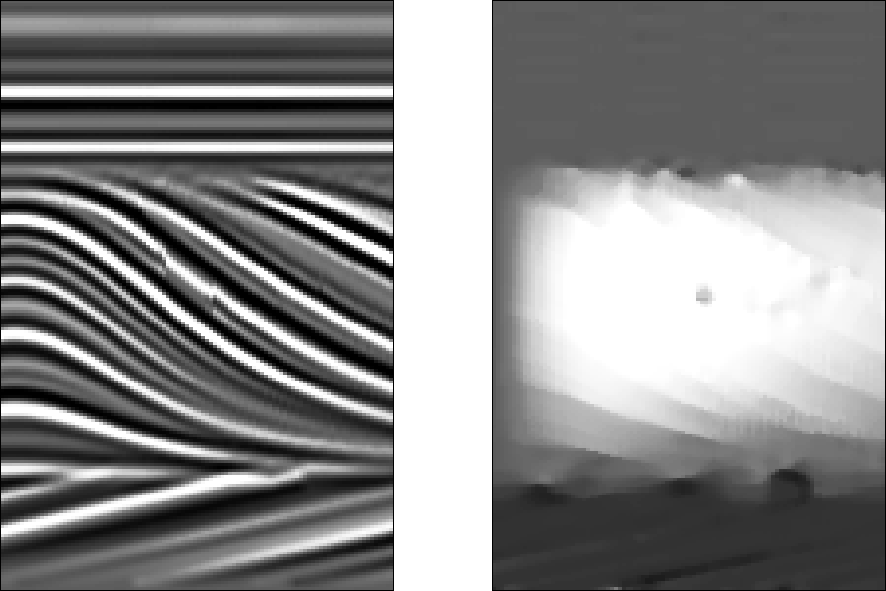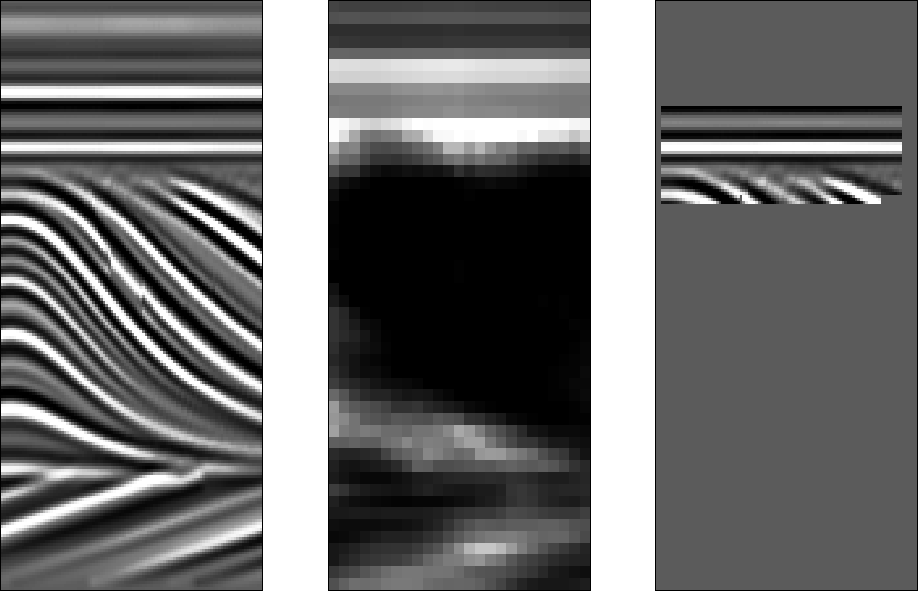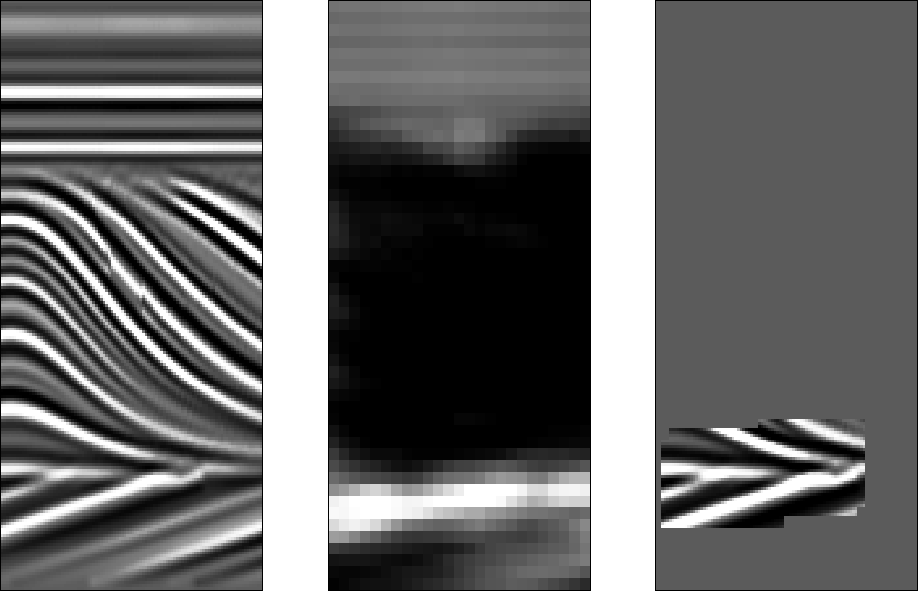 |
Figure 3 Left: Synthetic data, a modification of the ``quarter-dome'' model. Right: Estimated local dip.
Figure 3 shows the synthetic seismic dataset and associated local dip estimate. Figure 4 shows the facies templates used to test the algorithm and their corresponding local dip estimates. The seismic data is a 200x100 2-D slice of the ``quarter dome'' 3-D model used to test seismic coherency algorithms Claerbout (1998); Schwab (1998), and is characterized by two unconformities. The facies templates, 30x30 points each, are designed to resemble the upper and lower unconformities, respectively, but are not windowed directly from the data itself. Notice that the dip changes continuously across the faces of the unconformities.
 |
|
syn-trnshow
Figure 4 Top: Facies templates, corresponding to the upper and lower unconformities in the data (Figure ![[*]](http://sepwww.stanford.edu/latex2html/cross_ref_motif.gif) ), respectively.
Bottom: Estimated local dip of facies templates shown above. ), respectively.
Bottom: Estimated local dip of facies templates shown above.
|  |
Figures 5 and 6 show the output of the pattern recognition program, where the experiments were designed to detect the upper and lower unconformities, respectively. The results are good, but expected, given the high quality of the estimated dip, and provide adequate proof of concept.
 |
 |